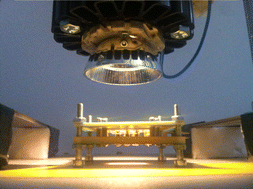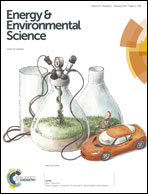Air-processed organic tandem solar cells on glass: toward competitive operating lifetimes†
Abstract
Photovoltaic devices based on organic semiconductors (OPVs) hold great promise as a cost-effective renewable energy platform because they can be processed from solution and deposited on flexible plastics using roll-to-roll processing. Despite important progress and reported power conversion efficiencies of more than 10% the rather limited stability of this type of devices raises concerns towards future commercialization. The tandem concept allows for both absorbing a broader range of the solar spectrum and reducing thermalization losses. We designed an organic tandem solar cell with an inverted device geometry comprising environmentally stable active and charge-selecting layers. Under continuous white light irradiation, we demonstrate an extrapolated, operating lifetime in excess of one decade. We elucidate that for the current generation of organic tandem cells one critical requirement for long operating lifetimes consists of periodic UV light treatment. These results suggest that new material approaches towards UV-resilient active and interfacial layers may enable efficient organic tandem solar cells with lifetimes competitive with traditional inorganic photovoltaics.


 Please wait while we load your content...
Please wait while we load your content...